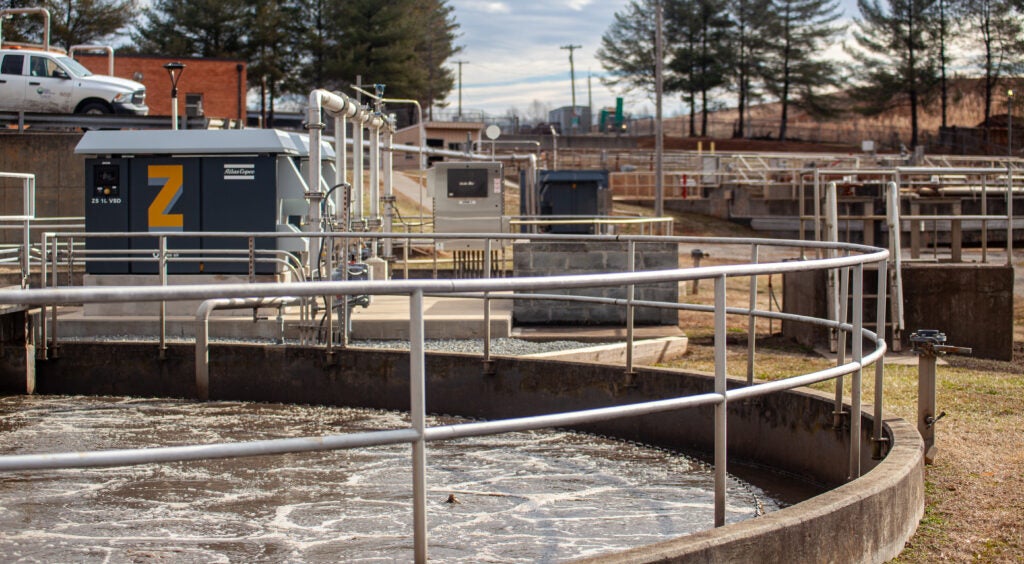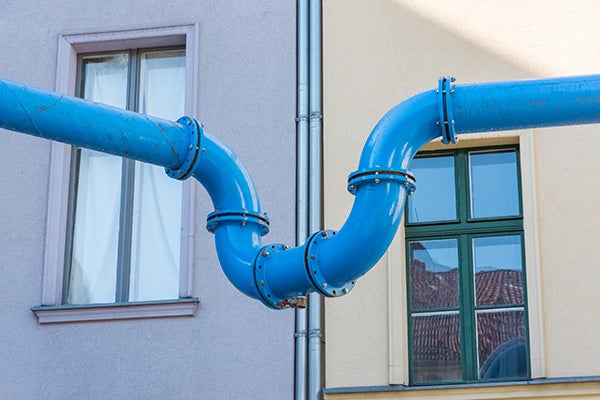Wastewater Treatment Process
We operate five wastewater treatment plants, which are responsible for processing projected sewage volumes and meet the Virginia Department of Environmental Quality regulations.
Preliminary Treatment
In the plants, wastewater flows through a series of channels and basins where it is exposed to physical, biological, chemical processes that clean the water. Preliminary treatment is the first stage of treatment designed to remove larger solids. The initial screening process removes debris such as rags, wood, food wrappers, mop heads, roots, etc.
The water then moves into a finer screening process that removes grit, eggshells, sand, coffee grounds, etc.
Primary Treatment
Primary treatment is the second stage of the process. The flow of the wastewater is slowed down to allow for organic, and inorganic floatable solids to settle out. The slower the water flows, the more solids settle out. The solids from this process is generally pumped to a waste tank or digester, and the cleaner water continues to flow to the next process.
Secondary Treatment
Secondary treatment is the next stage in the process. The water is now exposed to bacteria and other organisms that actually eat the organic solids that remain in the water. This process mimics that which occurs naturally in the environment; however, the wastewater plant can produce more bacteria which allows for large amounts of wastewater to be treated at a faster rate. While the solids are being consumed by the bacteria and organisms, more solids are actually being produced due to the large amounts of organisms and the associated solids that result from the process.
These solids are also settled out by slowing the flow of the water again. Some of these solids are returned to the beginning of the treatment process where they will meet with fresh wastewater that is entering. Extra solids that are not needed are pumped to a waste tank or digester. The much cleaner water now is allowed to flow out.
Tertiary Treatment
Tertiary treatment is not available in every wastewater plant but has been added in the more recent years to help with more stringent removal. This process usually involves a type of finer filtration to remove even more suspended solids and can aid in nitrogen, and phosphorus removal. The filtration unit is usually composed of sand, or membrane filtration.
Disinfection
Disinfection is the last stage of the process. The wastewater that has been cleaned could still contain pathogens that could be detrimental to human health. Not all of the organisms will be settled or filtered out. Chemicals, such as chlorine gas, or sodium hypochlorite (bleach) may be used to kill any remaining organisms in the water. If this process is utilized, then the water must be dechlorinated before it can be released back into the environment. The same chemicals that kill pathogens can also kill aquatic organisms, like fish. Chemicals, such as sulfur dioxide, or sodium bisulfite may be used.
Some plants utilize ultraviolet disinfection, in which the water flows through a system of ultraviolet lights that sterilize the organisms. This will halt their reproductive cycle. The water is then discharged to a receiving stream, creek, or river that has been designated to that wastewater plant through the Virginia Department of Environmental Quality.
Reintroducing Water into the Environment
It is vital to our environment that the water we clean be safely returned to the rivers and sea. Many of our rivers are cleaner now than they have been in the last century. This is because we have been working to renovate and modernize our region’s wastewater treatment plants. The water we discharge should be as clean or cleaner than what already exists.




